A cours about Portrait Photography درس حول تصوير البورتريه
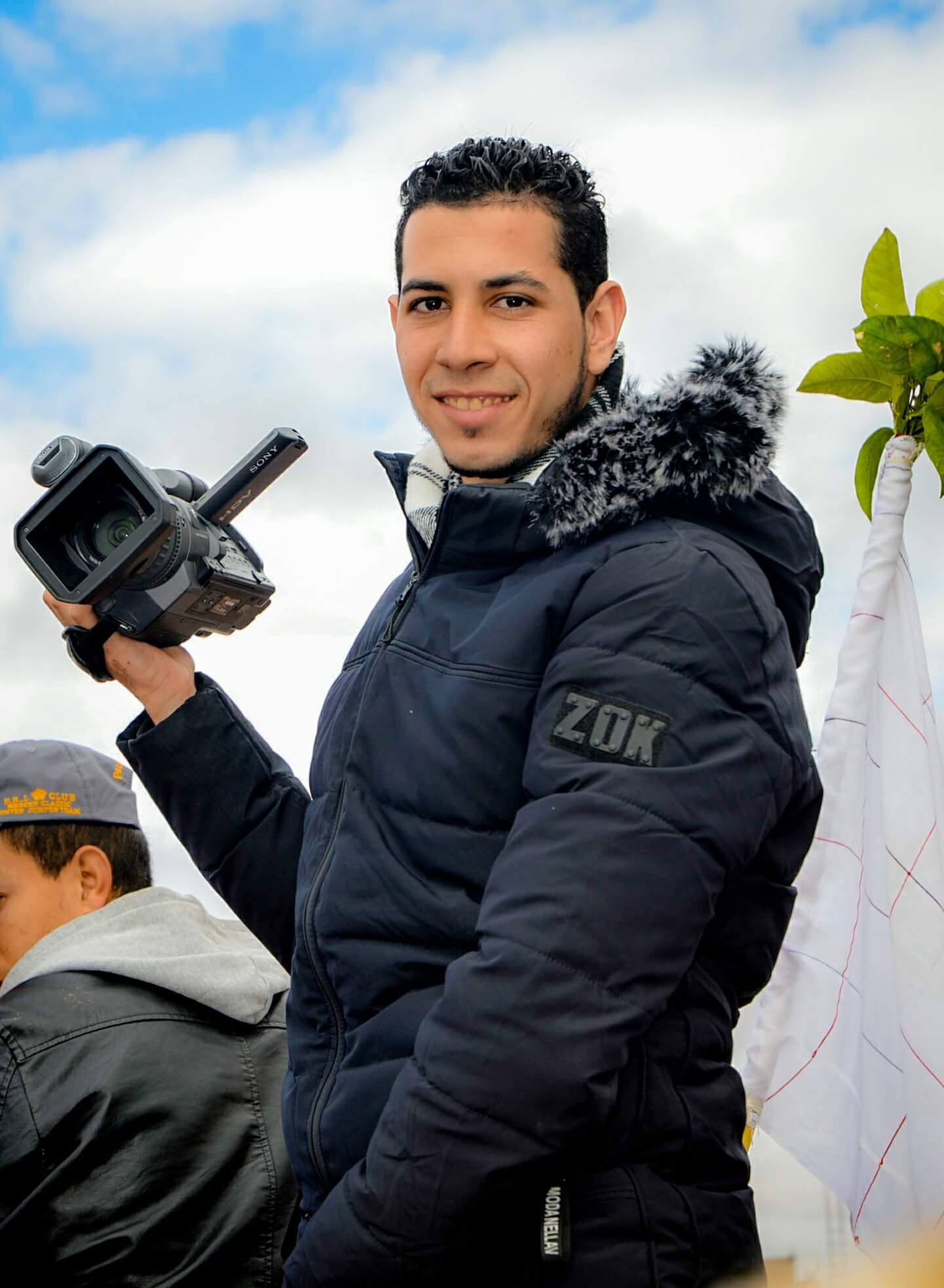
In portrait photography you generally need a telephoto lens to ensure that you do not get a distortion of the lens in the face, which results in the appearance of the face in a distorted and wide way. You also need to open a wide lens to isolate the background scene. If your cameras have APS-C cut-off sensors, the best and cheapest lens is 50mm 1.8 or 50mm 1.4. If your cameras are full-frame, the appropriate lens is 85mm 1.8 or 85mm 1.4. In case you have a good budget it is possible to get a 70-200mm 2.8 lens because it contains zoom but not necessarily. If you are going to use the lens for wedding photography or in the lounges, it is preferable to have a 24-70mm f2.8 lens so you can switch between shooting people and shooting the base easily.
Do not use wide lenses less than 50mm when shooting face so as not to get facial deformation.
For lighting equipment in the case of external photography you can use natural sunlight, in which case you need a reflector and a photovoltaic. In the case of industrial lighting inside or outside the studio there are many options and the cheapest of these options and the simplest is the acquisition of a pair of Chinese flashlights such as Yangon type mobile head and supports TTL and HSS technology. Chinese species such as Neweer or Yangon are cheaper compared to Nikon. You will also need a wireless controller to control the flash such as PocketWizard and prefer to buy types that support TTL and HSS. You also need light mounts, umbrellas or softboxes that are compatible with your flashlights. Make sure the box is relatively large to get a soft light.
Image Configuration:
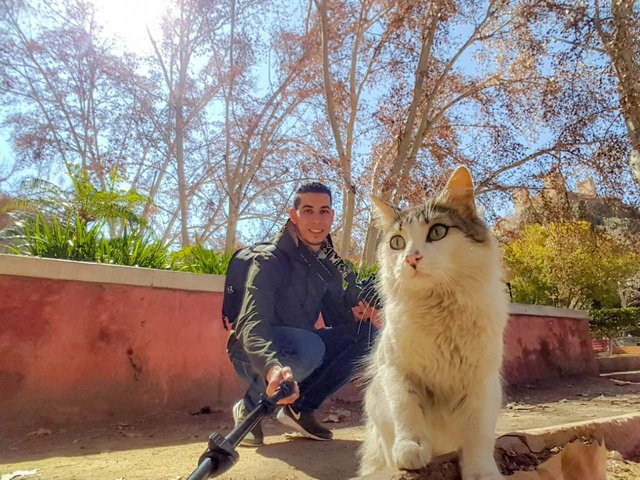
In the studio When shooting a portrait you can choose a black, white or gray background. There is no need to buy colored backgrounds and different inscriptions, because it is possible to use a green background and replaced later during the treatment of photoshop with the required background. Personally I use a folding gray background and then change it with photoshop with different patterns according to the desired mood of the picture.
Places of Photography:
The following list is not a binding law to choose places of photography, but is a set of elements that can be used during the discovery of places of photography and exploitation of the image. Pay attention to them while you are viewing and training them.
Leading lines: Leading lines are a theoretical line consisting of a set of repetitive objects in the landscape such as a group of columns, a train track or several trees next to each other. We can take advantage of these elements by forming the scene in a repetitive pattern and then inserting the person between them to break this pattern.
Inscriptions: Look for patterns such as cobblestones or fences and use them to create a background or a leading line behind or behind the person.
Reflections: Reflections consist of any reflective surface such as a mirror, glass or a water spot. We can take advantage of these elements to shape the scene in several ways. The most important thing in the use of reflection is that it balances the image. As for the methods of use, it is possible either to reverse the image of the person or the corresponding part of his body or to show something other than outside the picture frame in the mirror image as someone else looking at the house to form a story in the picture.
The composition in the portrait
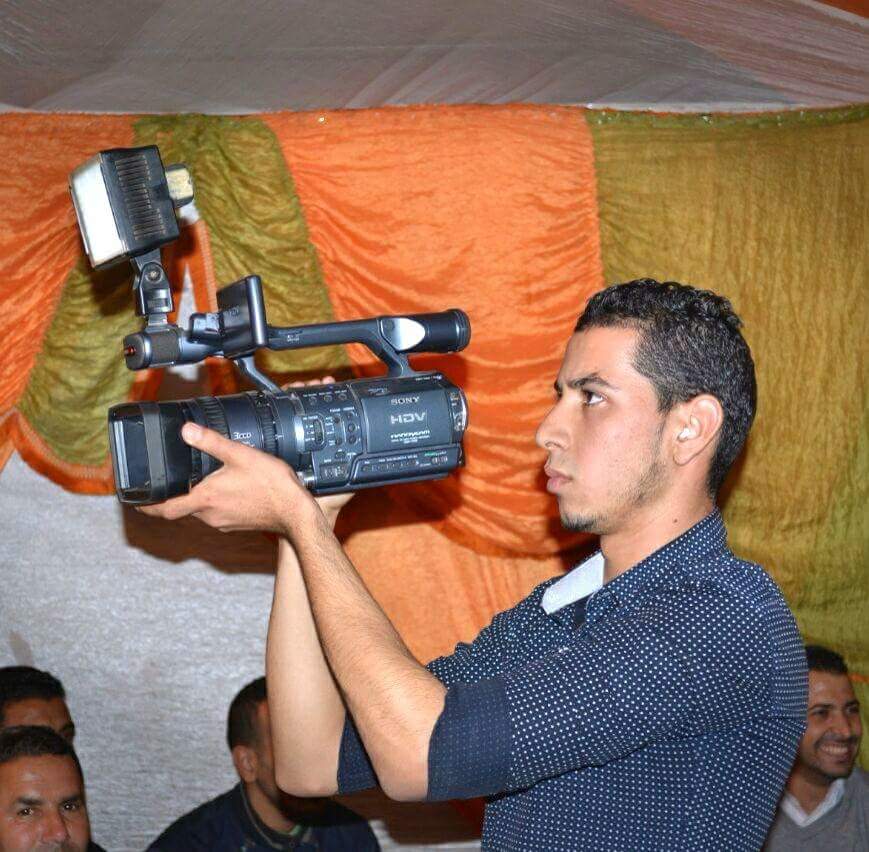
Element Balance: In this constructor we insert another element within the image frame to balance the scene. This can be done in several ways, such as making a person stand next to a particular panel or making a person stand by a window or mirror, for example.
Framing: Frames in the scene consist of doors, columns, windows or any two parallel lines. We can use frames to insert the person between them to give it more importance. Example of a girl looking from the window of the house and is filmed from the outside
Insulated background:
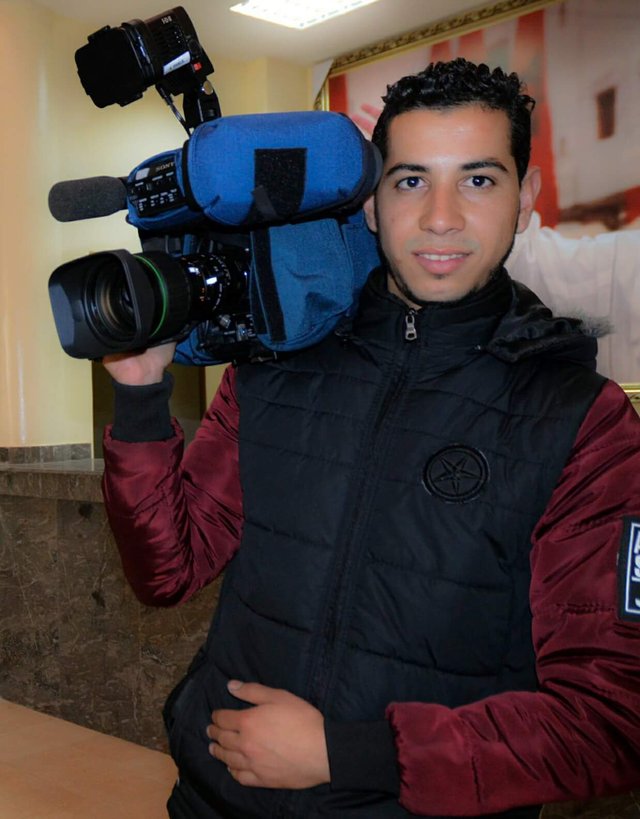
The isolated background can be any scene behind the person to be photographed and the background is isolated using a wide ap
erture such as f / 1.8 The background appears camouflaged and only the image of the person remains in the scene. When isolating the background, it is preferable to paint the background, which does not contain more than three colors, all of which are of the same color group, and not compete in the picture with the object of the picture. Use the manual focus and make the scene out of focus by moving the focus wheel manually and then move the camera right and north while looking from the eye of the camera to find the clean camouflage background and then make the person stand within the scene that you found and re-focus to the automatic and take the picture.

في تصوير البورتريت تحتاج بشكل عام إلى عدسة تيليفوتو Telephoto من اجل الحرص على عدم الحصول على تشويه العدسة في الوجه و الذي يؤدي إلى ظهور الوجه بشكل مشوه و عريض. كذلك تحتاج إلى فتحه عدسة واسعة من اجل عزل خلفية المشهد. في حال كانت كاميراتك بالحساس المقصوص APS-C فإن العدسة الأنسب و الارخص هي 50mm 1.8 أو 50mm 1.4. أما في حال كانت كاميراتك بالحساس الكامل Full Frame فالعدسة المناسبة هي 85mm 1.8 أو 85mm 1.4. في حال كان لديك ميزانية جيدة فمن الممكن الحصول على عدسة 70-200mm 2.8 لأنها تحتوي على الزوم و لكن ليست بالضرورة. و في حال كنت ستستخدم العدسة لتصوير الافراح أو ضمن الصالات فيفضل اقتناء عدسة 24-70mm f2.8 لكي تستطيع التبديل بين تصوير الاشخاص و تصوير القاعدة بسهولة.
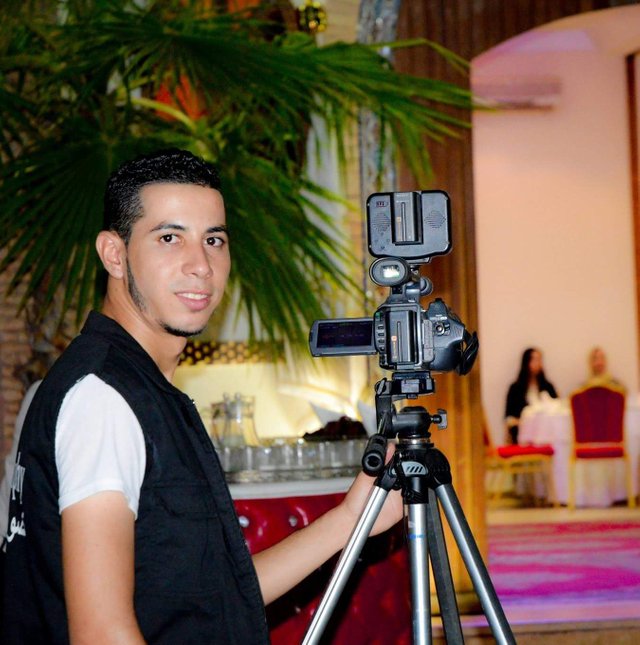
لا تقم باستعمال العدسات العريضة اقل من 50mm عند تصوير الوجوه حتى لا تحصل على تشوه الوجه.
تشويه الوجه عند استخدام العدسة العريضة face distorion
بالنسبة لمعدات الإضاءة في حال التصوير الخارجي يمكنك استعمال اضاءة الشمس الطبيعية و في هذه الحالة تحتاج إلى عاكس و مشتت ضوئي. أما في حال الإضاءة الصناعية داخل الاستوديو أو خارجه يوجد الكثير من الخيارات و أرخص هذه الخيارات و ابسطها هي اقتناء زوج من الفلاشات الصينية مثل نوع Yangon بالرأس المتحرك و يدعم تقنية TTL و HSS. الانواع الصينية مثل Neweer أو Yangon تمتاز برخصها مقارنة بالانواع المزودة من نيكون كانون. ستحتاج أيضاً إلى قوادح لاسلكية للتحكم بالفلاش مثل PocketWizard و يفضل شراء الانواع التي تدعم TTL و HSS. تحتاج أيضاً إلى حوامل للضوء و مظلات أو سوفت بوكس متوافقة مع الفلاشات التي لديك. احرص على ان يكون السوفت بوكس كبير نسبيا لتحصل على اضاءة ناعمة.
تكوين الصورة:
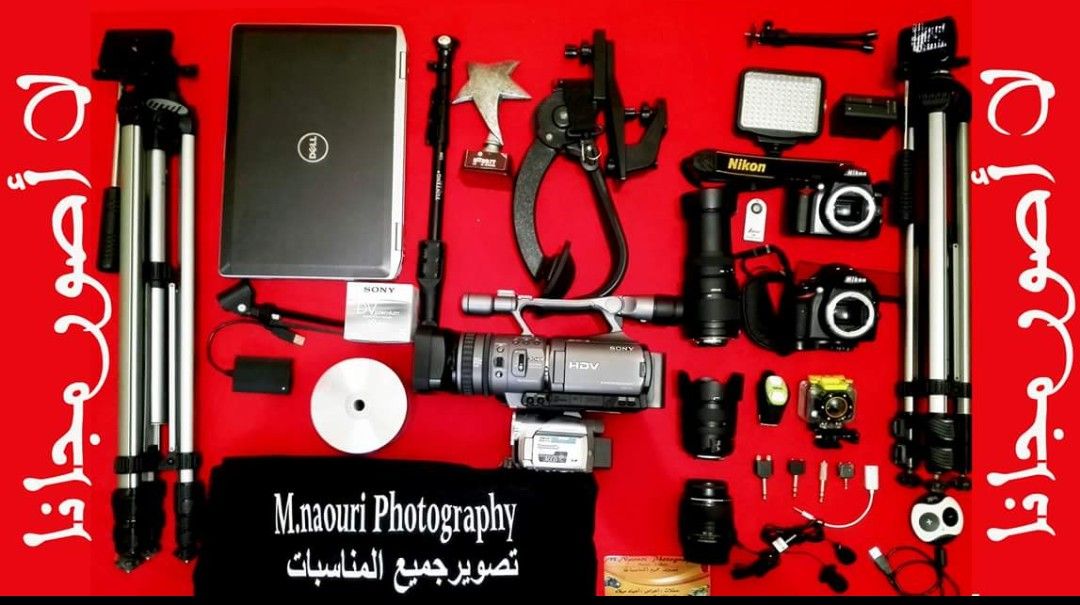
في داخل الاستوديو عند تصوير البورتريت يمكنك اختيار خلفية سوداء أو بيضاء أو رمادية. لا داعي لشراء خلفيات ملونة و نقوش مختلفة و ذلك لأنه من الممكن استعمال خلفية خضراء و استبدلها فيما بعد اثناء المعالجة بالفوتوشوب بالخلفية المطلوبة. بشكل شخصي اقوم باستعمال خلفية رمادية قابلة للطي ثم اقوم بتبديلها بالفوتوشوب بنقوش مختلفة حسب المزاج المطلوب من الصورة.
بالنسبة للتصوير الخارجي حيث يتم استعمال المشهد كجزء من الصورة لا تقم بتصوير الشخص كما يفعل العامة أمام البحيرة أو النافورة أو أمام الجبل. و إنما قم باستكشاف الأمان و ابحث عن الزوايا و المشاهد التي تحتوي على النقوش أو الخطوط القيادية أو الانعكاس أو الإطارات أو الخلفية المعزولة و المموهه أو البوكه. أو حاول جعل الشخص يبدوا جزء من المشهد عبر جعل الصورة تبدوا كقصة تتفاعل فيها محيط الصورة مع الهدف. عند تكوينك للمشهد قم بقص الصورة أو استعمل الزوم لاستبعاد العناصر الغير مرغوب من المشهد.
عناصر أماكن التصوير:

القائمة التالية ليست قوانين ملزمة لاختيار اماكن التصوير و إنما هي مجموعة من العناصر التي من الممكن الاستفادة منها اثناء اكتشاف اماكن التصوير و استغلالها لصنع الصورة. قم بالانتباه إليها اثناء رؤية أماكن التصوير و التدرب عليها.
الخطوط القيادية: الخطوط القيادية هي عبارة عن خط نظري يتكون من مجموعه من الأشياء المتكررة في المشهد مثل مجموعة أعمدة أو سكة القطار أو عدة اشجار بجانب بعضها البعض. نستطيع الاستفادة من هذه العناصر بتشكيل المشهد بنمط متكرر ثم ادراج الشخص بينها لكسر هذا النمط.
النقوش: إبحث عن النقوش مثل الحجارة المرصوفة أو الأسيجة و استعملها لتكوين خلفية أو خط قيادي بجانب أو خلف الشخص.
الإنعاكس: الإنعكاسات تتكون من اي سطح عاكس مثل المرآة أو الزجاج أو بقعة مياه. نستطيع الاستفادة من هذه العناصر لتشكيل المشهد بعدة طرق.الشيء الأهم في استعمال الانعكاس هو انها تقوم بعمل توازن في الصورة. أما بالنسبة لطرق استعمالها فمن الممكن اما عكس صورة الشخص أو الحزء المقابل من جسده أو اظهار شيء أخر غير من خارج إطار الصورة في الصورة المعكوسة كشخص اخر ينظر إلى المرآن لتكوين قصة في الصورة.
التكوين في البورتريت Portrait composition

توازن العناصر: في هذا المبداء نقوم بادراج عنصر اخر داخل اطار الصورة لعمل توازن في المشهد. من الممكن اجراء ذلك بعدة طرق منها مثلا جعل الشخص يقف بجانب لوحة معينة
أو جعل الشخص يقف بجانب نافذة أو مرآه مثلا.
التأطير: الإطارات في المشهد تتكون من الأبواب و الأعمدة و النوافذ أو اي خطين متناظرين. نستطيع استعمال الإطارات لادراج الشخص بينها لاعطاءه المزيد من الأهمية. مثال فتاه تنظر من نافذة المنزل و يتم تصويرها من الخارج
الخلفية المعزولة: الخلفية المعزولة من المكن ان تكون اي مشهد خلف الشخص المراد تصويره و يتم عزل الخلفية باستعمال فتحة واسعة مثل f/1.8 فتظهر الخلفية مموهة و يبقى في المشهد صورة الشخص فقط. عند عزل الخلفية يفضل انقاء الخلفية التي لا تحتوي على اكثر من ثلاث الوان و ان تكون جميعها من نفس المجموعة اللونية تقريبا و لا تتنافس في الصورة مع هدف الصورة. قم باستعمال التركيز اليدوي و اجعل المشهد خارج التركيز بتحريك دولاب التركيز يدويا ثم حرك الكاميرا يمينا و شمالا اثناء النظر من عين الكاميرا لايجاد الخلفية المموهة النظيفة و بعد ذلك اجعل الشخص يقف ضمن المشهد الذي وجدته و قم بإعادة التركيز إلى الوضع الأوتوماتيكي و قم باخذ الصورة.
Merci pour les informations. Je te souhaite une bonne continuation, et le bonheur de tous le monde en retour...
Merci bcp mon cher frere
شكرا على هذه المعلومات القيمة معك سنكون مصورين محترفين ننتظر المزيد
شكرا أخي العزيز
معلومات منمهة شكرا اخي
مرحبا صديقي
شكرا على المشاركة. لقد استفدت بعض المعلومات من هذا المنشور . كما اعجبتني صورتك مع القطة
اتمنى لك الحظ السعيد
شكرا لك و مرحبا بك إن احتجت لشئ ما
des jolies photos .bonne continuation
Merci frero